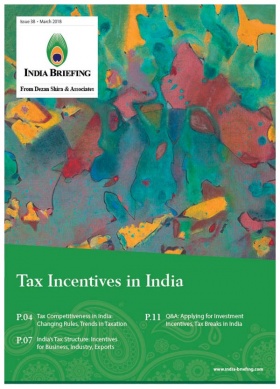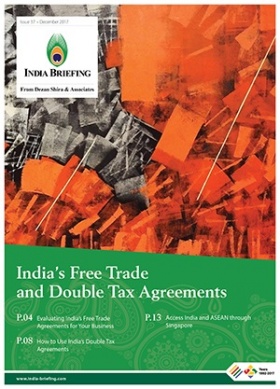Transfer Pricing in India Explained
In taxation and accounting, transfer pricing refers to the rules and methods for pricing transactions within and between enterprises under common ownership or control.
According to the Indian Income-tax Act, 1961, income arising from such transactions must be computed using the arm’s length price principle, that is, the amount payable if the trading companies were unrelated or uncontrolled.
Transfer pricing provisions are applicable on international transactions and specified domestic transactions between associated enterprises (AE).
International transactions refers to transactions between two or more AEs involving one of the following activities:
- The sale, purchase, or lease of tangible or intangible property;
- The provision of services or cost-sharing agreements;
- The lending or borrowing of money;
- a transaction of business restructuring or reorganization with an associated enterprise, irrespective of the fact that it has bearing on the profit, income, losses or assets and/or
- Any other transaction with a bearing on the profits, income, losses, or assets of such enterprises.
Relationships falling under the AE category include direct or indirect participation in the management, control, or capital of an enterprise by another enterprise.
They also cover situations in which the same person participates in the management, control, or capital of both the enterprises.
Safe harbor rules
Safe harbor in tax parlance refers to the circumstances under which income-tax authorities accept the transfer price declared by the company, at which it transacts with its subsidiaries or an associated company, without any question.
On June 7, 2017, the Central Board of Direct Taxes (CBDT) in India revamped safe harbor rules to align safe harbor margins with industry standards and enlarge the scope of international transactions under it.
The new safe harbor rules came into effect from April 1, 2017, and will continue to remain in force for the next two years, up to the assessment year (AY) 2019-2020.
Methods to determine the arm’s length price
For tax purposes, companies are required to record the exchange of goods using the arm’s-length principal. India’s Income-tax Act, 1961 prescribes the following methods to determine the arm’s length price between two affiliated companies:
- Comparable Uncontrolled Price (CUP) Method;
- Resale Price Method (RPM);
- Cost Plus Method (CPM);
- Profit Split Method (PSM);
- Transactional Net Margin Method (TNMM);
- Such other methods as may be prescribed.
The ‘other method’ can be any method that takes into account the price which has been charged for the same or similar transactions, with or between non-associated enterprises, under similar circumstances considering all the relevant facts.
As such, no particular method is accorded priority. However, the most appropriate method for the transaction is determined based on the nature and class of transaction or associated persons and functions performed.
Specified domestic transactions
From the fiscal year 2012-13, transfer pricing regulations in India also incorporate domestic transactions.
As per the law, the following transactions with related domestic parties qualify as specified domestic transactions, provided the aggregate value of such transactions exceed Rs 200 million (US$2.8 million):
- Any expenditure with respect to which deduction is claimed while computing profits and gains of a business or profession;
- Any transaction related to businesses eligible for profit-linked tax incentives, such as infrastructure facilities and SEZ units under specific sections of the Income-tax Act, 1961; or
- Any other transactions as may be specified.
Advance pricing agreement
An advance pricing agreement (APA) is an agreement between a taxpayer and at least one tax authority. The agreement is on the transfer pricing methodology to be used to determine taxpayer’s international transactions with its associated groups (AGs) for future years.
APAs can be one-sided, two-sided/bilateral, or multilateral:
- An independent APA is an agreement between a taxpayer and the tax authority of the country where the taxpayer is located;
- Two-sided or bilateral APA involves the taxpayer, AG of the taxpayer in the foreign country, the tax authority of the country where the taxpayer is located, and the foreign tax authority; and
- Multilateral APAs concern the taxpayer, two or more AGs of the taxpayer located in different foreign countries, the tax authority of the country where the taxpayer is located, and the tax authorities of the AGs.
Country-by-Country reporting
The Indian government has proposed to introduce three-layered transfer pricing documentation requirements.
Taxpayers will now be required to prepare a master file, local file, and country-by-country (CbC) reporting.
While the detailed contents of these documents is provided through rules, the reporting requirements are expected to align with the Organization for Economic Co-operation and Development’s (OECD) Base Erosion and Profit Shifting (BEPS) Action 13 on transfer pricing documentation and CbC reporting.
Some of the important requirements are mentioned as follows:
The reporting provisions shall apply to an international group (a group that operates in two or more jurisdictions) having consolidated revenues exceeding the prescribed threshold, that is Rs 5 billion (US$68.87 million) in the current year. The threshold is required to be computed based on the exchange rates on the last day of the previous year.
An Indian parent entity is required to furnish the CbC report in respect of the group by the due date of furnishing of return of income for the relevant financial year. That is November 30, following the financial year.
An entity in India of an international group having an overseas resident parent is only required to provide the details of the country of residence of the parent — form, manner, and date to be prescribed.
An Indian entity belonging to an international group with an overseas parent shall be required to furnish the CbC report to the prescribed authority if the parent entity of the group is resident:
- In a country with which India does not have an arrangement for exchange of the CbC report; or
- There is a systematic failure of the country in exchanging the said information with India even though there is an agreement, and this fact has been intimated to the entity.
The above filing requirement will not apply where the alternate reporting entity has furnished the CbC report with its tax authority by the prescribed due date, and the same can be obtained by Indian tax authorities under the agreement for the exchange of information.
Transfer pricing documentation
Taxpayers are required to maintain information related to international transactions undertaken with AEs. The rules prescribe detailed information and documentation that must be maintained by the taxpayer. Such requirements can broadly be divided into two parts.
The first part includes information on the ownership structure of the taxpayer, a group profile, and a business overview of the taxpayer and AEs, including prescribed details such as the nature, terms, quantity, and value of international transactions. The rules also require the taxpayer to document a comprehensive transfer pricing study.
The second part of the rules requires that adequate documentation is maintained to substantiate the information, analysis, and studies documented under the first part of the rule. It also contains a recommended list of such supporting documents, including government publications, reports, studies, technical publications, and market research studies undertaken by reputable institutions, price publications, relevant agreements, contracts, and correspondence.
Taxpayers having aggregate international transactions below the prescribed threshold of Rs 10 million (US$ 137,750) and Specified Domestic Transactions below the threshold of Rs 200 million (US$ 2.7 million) are relieved from maintaining the prescribed documentation. However, it is essential that the documentation maintained should be adequate to substantiate the arm’s length price of the international transactions or specified domestic transactions.
Companies to which transfer pricing regulations are currently applicable are required to file their tax returns on or before November 30, following the close of the relevant tax year.
About Us
India Briefing is produced by Dezan Shira & Associates. The firm assists foreign investors throughout Asia and maintains offices in China, Hong Kong, Indonesia, Singapore, Vietnam, and Russia.
Please contact india@dezshira.com or visit our website at www.dezshira.com.
- Previous Article Foreign E-commerce Firms to Register for GST in Every Indian State
- Next Article Tipos de auditorías e informes en India











